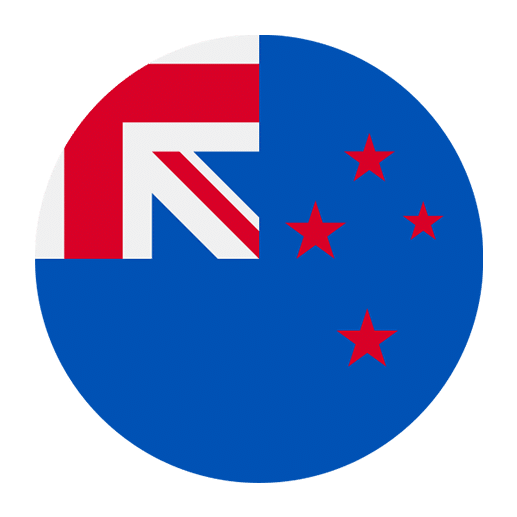The Māori language, or te reo Māori, is more than just a means of communication for the indigenous people of New Zealand. It is a repository of cultural knowledge, traditions, and beliefs that have been passed down through generations. One of the most significant areas where te reo Māori plays a crucial role is in traditional healing practices. These practices, which have been an integral part of Māori culture for centuries, rely heavily on the language to convey the spiritual, medicinal, and holistic knowledge required for healing. This article explores the profound connection between the Māori language and traditional healing practices, shedding light on how te reo Māori serves as a bridge between the physical and spiritual realms in the context of health and well-being.
The Foundation of Māori Traditional Healing
Māori traditional healing, or rongoā, encompasses a wide range of practices aimed at restoring balance and harmony within an individual. These practices are deeply rooted in the Māori worldview, which sees health as a holistic concept involving the physical, mental, emotional, and spiritual dimensions of a person. Central to this worldview is the belief in the interconnectedness of all things, including humans, nature, and the spiritual world.
Rongoā Māori includes various methods such as herbal remedies, massage (mirimiri), and spiritual healing (wairua). These practices are often guided by tohunga, or traditional healers, who possess extensive knowledge of plants, rituals, and the spiritual aspects of healing. The transmission of this knowledge relies heavily on te reo Māori, as the language carries the cultural nuances and specific terminologies that are essential for understanding and practicing rongoā.
The Language of Plants and Remedies
One of the most critical aspects of rongoā Māori is the use of native plants and herbs for medicinal purposes. The knowledge of these plants, their properties, and their applications is traditionally conveyed in te reo Māori. Many of these plants have names that describe their characteristics, uses, or the ailments they are known to treat. For example, kawakawa (Piper excelsum) is a plant commonly used for its anti-inflammatory and pain-relieving properties. Its name, which means “bitter” in Māori, reflects its taste and its potent medicinal qualities.
The language also includes specific terms for the preparation and administration of these remedies. For instance, the process of making an infusion or tea from medicinal plants is known as “rongoā wai” (medicinal water). The vocabulary and linguistic structures of te reo Māori are thus crucial for accurately conveying the detailed knowledge required for the effective use of these natural remedies.
Oral Tradition and Knowledge Transmission
The transmission of traditional healing knowledge in Māori culture has historically been an oral process. Elders and tohunga pass down their expertise through storytelling, chants (karakia), and hands-on teaching. Te reo Māori is the medium through which this rich oral tradition is maintained. The language encapsulates not only the practical aspects of healing but also the spiritual and cultural context in which these practices are embedded.
Chants and prayers, often recited during healing rituals, are particularly significant. These karakia are composed in te reo Māori and are believed to invoke spiritual guidance and protection. The precise wording and intonation are essential, as they are thought to hold the power to influence the spiritual realm. Learning these karakia requires a deep understanding of the language and its spiritual significance, making te reo Māori indispensable for the preservation and practice of traditional healing.
Spiritual Healing and the Role of Wairua
In Māori healing practices, the concept of wairua, or spirit, is fundamental. Health is seen as a state of balance between the physical body and the wairua. When this balance is disrupted, it can lead to illness. Traditional healers often work to restore this balance through spiritual healing practices, which are deeply intertwined with the Māori language.
Wairua healing involves rituals and ceremonies that are conducted in te reo Māori. These may include karakia, the use of sacred objects (taonga), and the participation of the community. The language used in these rituals is not just a means of communication but a conduit for spiritual energy and intent. The words and phrases, chosen carefully and spoken with reverence, are believed to carry the power to heal and protect.
The Role of Tohunga
Tohunga, or traditional healers, play a pivotal role in Māori healing practices. They are the custodians of the knowledge and skills required for both physical and spiritual healing. The training of a tohunga is a rigorous process that involves learning the intricacies of te reo Māori, as well as the cultural and spiritual knowledge embedded within the language.
Tohunga use the language to diagnose and treat illnesses, communicate with the spiritual realm, and guide their patients through the healing process. Their ability to perform these tasks effectively is closely tied to their proficiency in te reo Māori. The language provides the framework for understanding the complex interplay between the physical and spiritual aspects of health, making it an essential tool for tohunga in their practice.
Modern Revitalization Efforts
In recent years, there has been a resurgence of interest in Māori culture and language, driven by efforts to revitalize and preserve these important aspects of New Zealand’s heritage. This revitalization has had a positive impact on the practice of rongoā Māori, as more people are learning te reo Māori and seeking to reconnect with traditional healing practices.
Language revitalization initiatives, such as Māori language immersion schools (kura kaupapa Māori) and community language programs, have played a crucial role in this process. By providing opportunities for people to learn and use te reo Māori, these initiatives are helping to ensure that the knowledge and practices of rongoā Māori are passed on to future generations.
Integration with Modern Healthcare
Another significant development is the integration of traditional Māori healing practices with modern healthcare. In some areas, healthcare providers are working in partnership with tohunga and other practitioners of rongoā Māori to offer a more holistic approach to health and well-being. This integration is facilitated by the use of te reo Māori, which allows for effective communication and collaboration between traditional and modern healthcare systems.
For example, some hospitals and clinics now offer rongoā Māori services alongside conventional medical treatments. These services may include consultations with tohunga, the use of traditional herbal remedies, and the incorporation of spiritual healing practices. By recognizing the value of Māori traditional healing and incorporating it into the broader healthcare system, these initiatives are helping to promote cultural understanding and improve health outcomes for Māori communities.
The Cultural Significance of Te Reo Māori in Healing
The use of te reo Māori in traditional healing practices is not just about preserving a language; it is about maintaining a cultural identity and worldview that is integral to the health and well-being of Māori people. The language carries with it the values, beliefs, and knowledge that are essential for understanding and practicing rongoā Māori. It provides a sense of continuity and connection to the past, while also offering a means of navigating the challenges of the present and future.
For many Māori, the use of te reo Māori in healing practices is a source of pride and empowerment. It affirms their cultural heritage and reinforces their sense of identity. It also provides a means of reclaiming and revitalizing traditional knowledge that has been marginalized or suppressed through colonization and modernization. In this way, the role of te reo Māori in traditional healing practices is both a reflection of and a catalyst for the broader movement towards cultural revitalization and self-determination for Māori communities.
Challenges and Opportunities
While there have been significant strides in revitalizing te reo Māori and traditional healing practices, there are still challenges to be addressed. One of the primary challenges is the need for more resources and support for language learning and cultural education. This includes funding for language programs, training for teachers and healers, and the development of educational materials that reflect the richness and complexity of Māori knowledge.
Another challenge is the need to navigate the relationship between traditional healing practices and modern healthcare systems. While there are many benefits to integrating these approaches, it is important to do so in a way that respects and preserves the integrity of rongoā Māori. This requires ongoing dialogue and collaboration between Māori communities, healthcare providers, and policymakers.
Despite these challenges, there are also many opportunities for growth and innovation. The increasing recognition of the value of indigenous knowledge and the growing interest in holistic and culturally responsive approaches to health provide a fertile ground for the continued revitalization of te reo Māori and traditional healing practices. By building on the strengths of both traditional and modern approaches, it is possible to create a more inclusive and effective healthcare system that honors the cultural heritage and promotes the well-being of all people.
Conclusion
The role of te reo Māori in traditional healing practices is a testament to the profound connection between language, culture, and health. As a vital repository of knowledge and a conduit for spiritual and medicinal practices, the Māori language is essential for the preservation and practice of rongoā Māori. Through the revitalization of te reo Māori and the integration of traditional healing with modern healthcare, there is an opportunity to honor and uphold the cultural heritage of the Māori people while promoting a more holistic and inclusive approach to health and well-being.
As we continue to explore and appreciate the richness of Māori traditional healing practices, it is important to recognize the central role of the language in these practices. By supporting the revitalization of te reo Māori and fostering a deeper understanding of its cultural significance, we can contribute to the preservation of this invaluable heritage and ensure that the wisdom and knowledge of the Māori people continue to thrive for generations to come.

